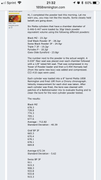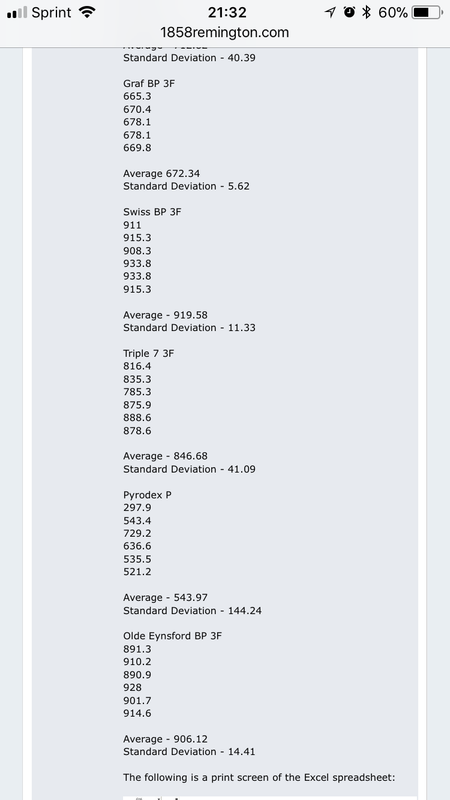- Joined
- Jul 15, 2007
- Messages
- 1,996
- Reaction score
- 657
I’ve always been a GOEX guy. I hardly ever shoot any of the black powder subs. Also, I’ve never tried Swiss black powder even though I’ve seen numerous reports that it produces better accuracy, is cleaner burning and load for load yields higher and more consistent velocities than GOEX.
So after many years of resisting the lure of Swiss I decided to get some and see for myself. This is a report of my side-by-side comparison of Swiss and GOEX in the 2F and 3F granulations of each.
For this exercise I chose to use my TC Renegade with a .45 caliber 1:30” twist Green Mountain barrel and shoot full bore conicals. I chose this gun and bullet for three reasons; the gun wears a Simmons 4X ProDiamond shotgun scope to keep aiming errors to a minimum, it’s already zeroed in for the load I planned to shoot, and I’ve shot the gun and bullet enough to know what kind of accuracy can be expected.
I installed a new AMPCO nipple at the beginning the shooting session and followed the following procedures for the test:
1. Four targets were shot at 100 yards, with five shots on each target and a different powder used for each target. All shots were over a chronograph 10 feet from the muzzle.
2. The first shot on each target was from a cold clean barrel with a three to five minute cooling period between each of the following four shots.
3. The bore was wiped between each shot with both sides of a fresh patch lightly moistened with 91% Isopropyl alcohol - one stroke down and up with each side. The bore was fully cleaned between targets.
4. For the first shot on each target, the bullet was seated until it just touched the powder. Then a stop collar on the loading rod was locked in place 1/8” above the muzzle and the load compressed that one-eighth inch. The stop collar remained locked in that position for the following four shots to assure the consistent load compression. The stop collar was reset in this manner for each target.
5. Pre-weighed powder charges of 85 grains actual weight were used.
6. The bullets were flat nose conicals cast from pure soft lead then sized and lubed to .452 diameter. They were weight sorted to assure that all were between 464.0 and 464.5 grains, and inspected to assure all had undamaged bases with sharp corners.
7. A 1/2” diameter 1/8” thick unlubed wool wad was used under the base of the bullets.
8. Winchester #11 magnum percussion caps from the same tin were used.
9. Shots were from a bench using a Caldwell shooting rest under the foreend and a rabbit ear bag under the butt stock.
Here are the charges ready to be shot.
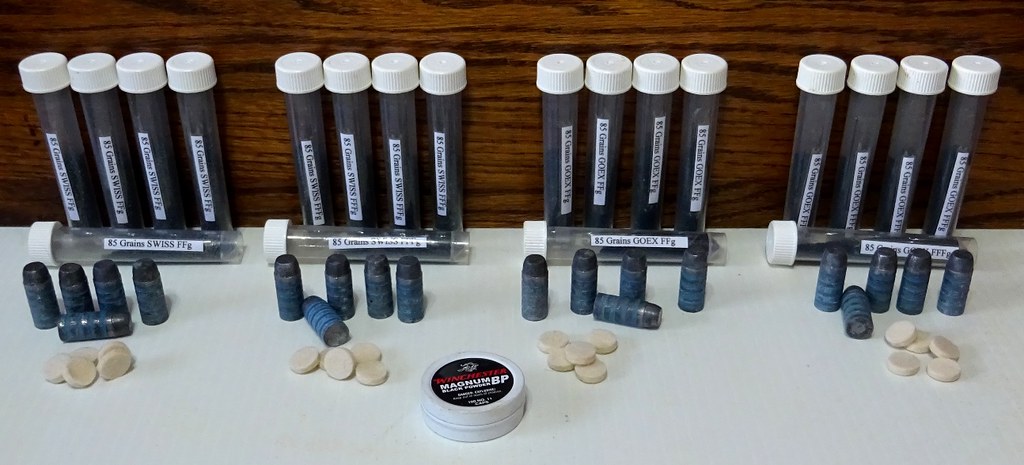
Here’s the shooting bench and range.
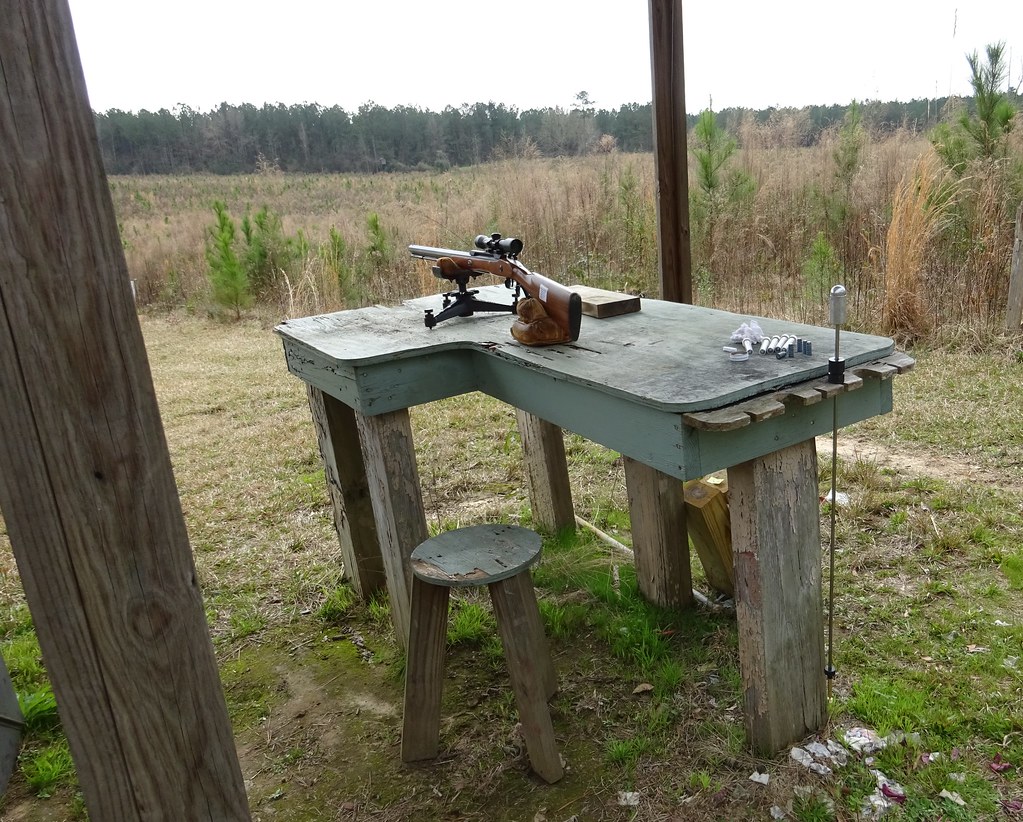
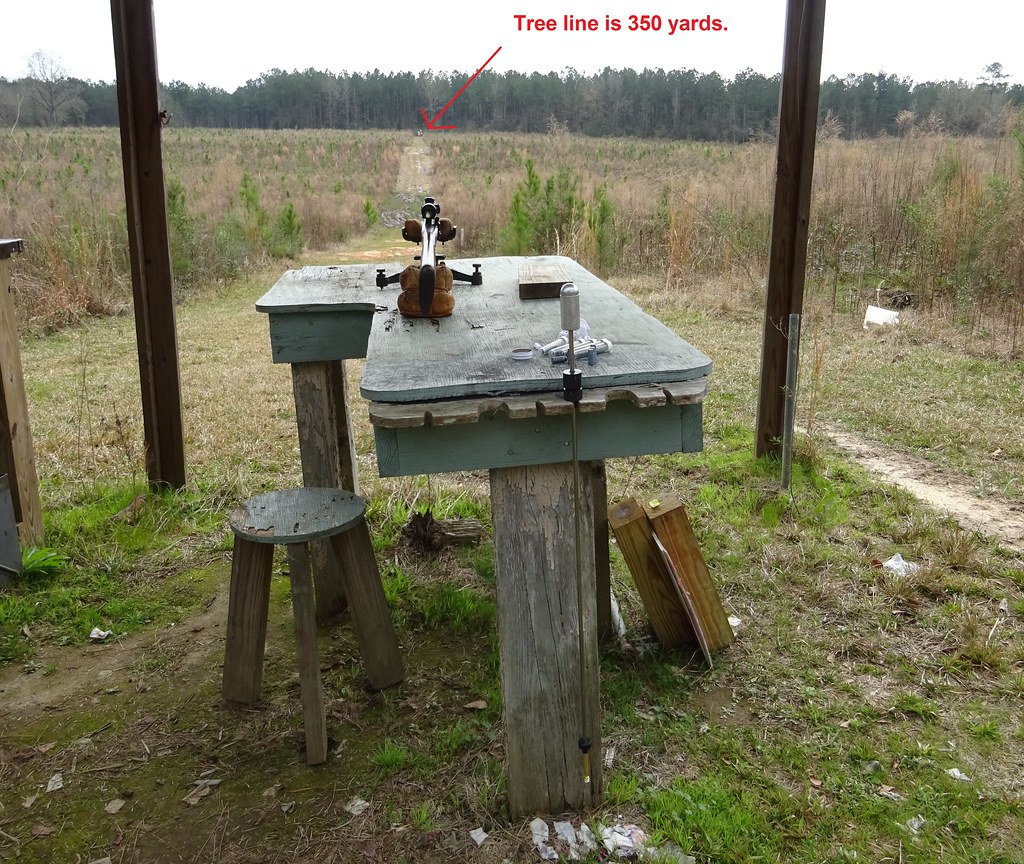
Here are the four targets.
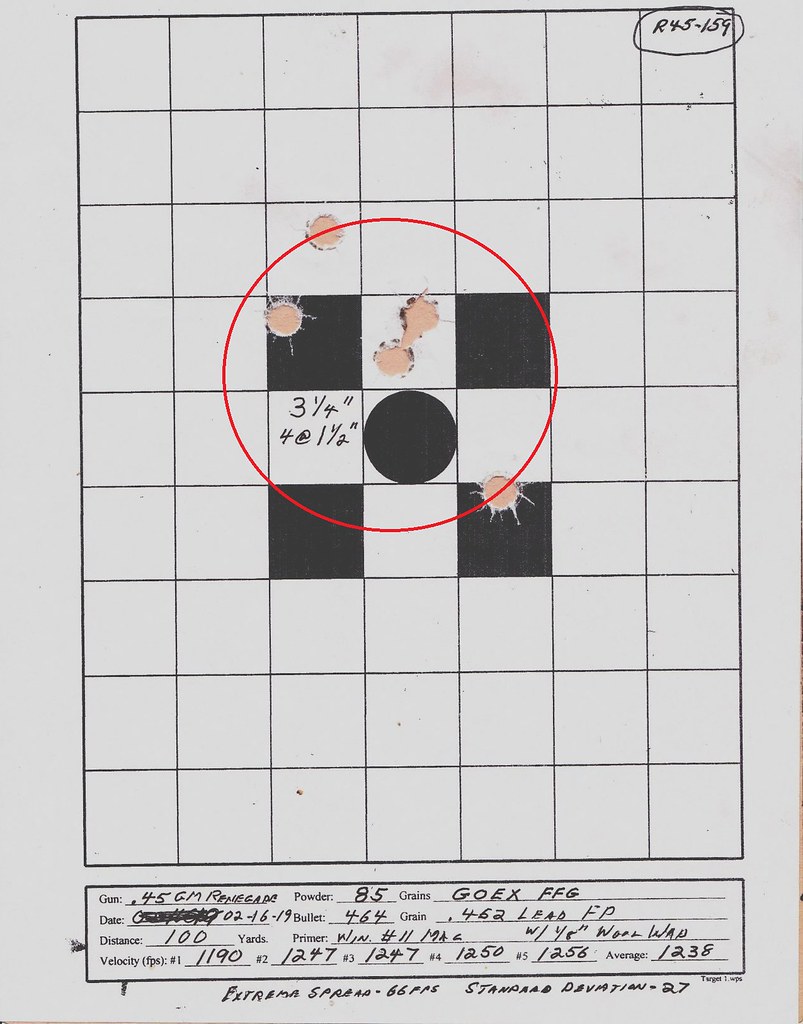
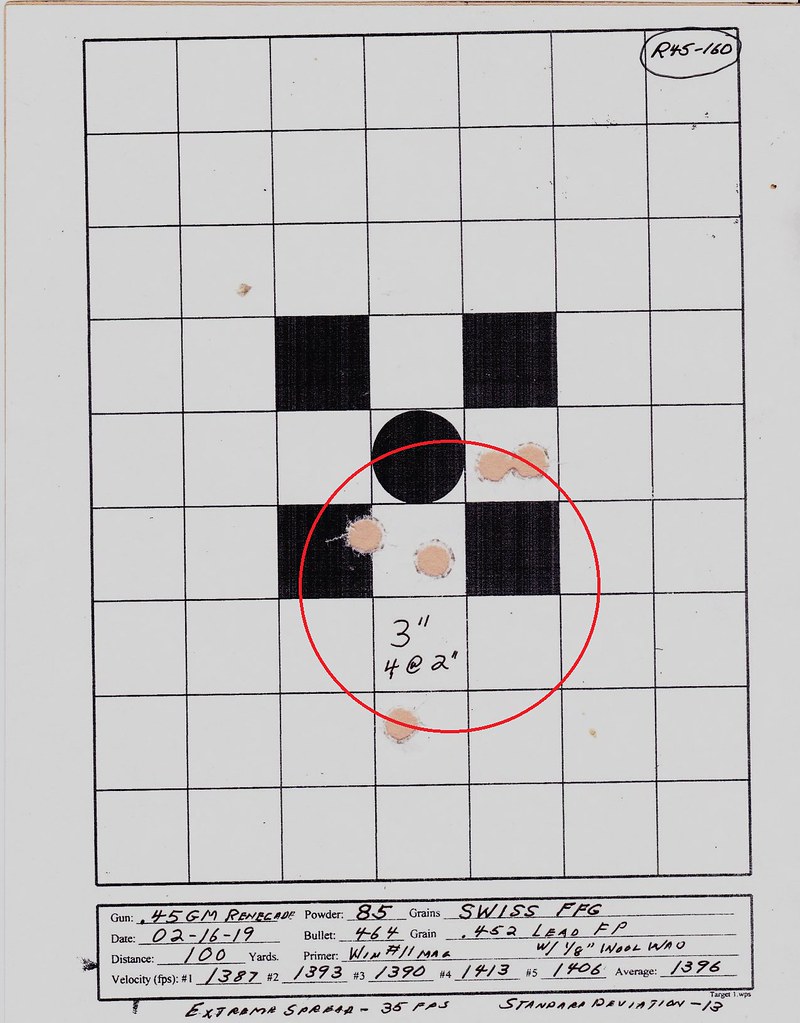
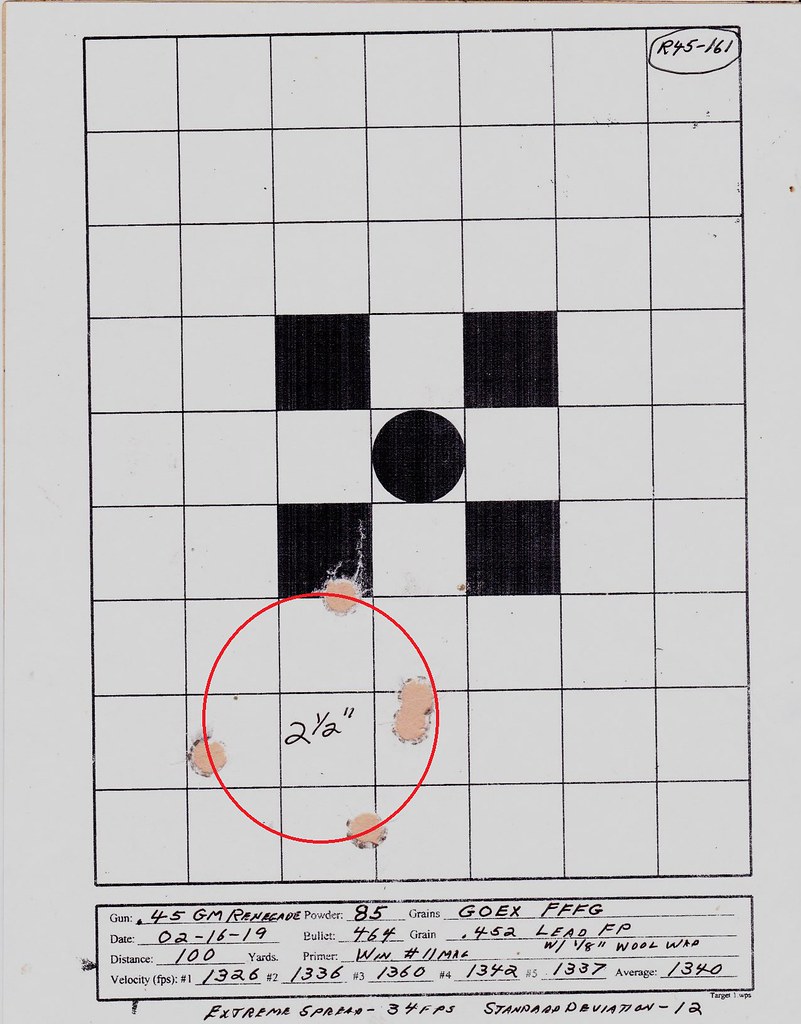
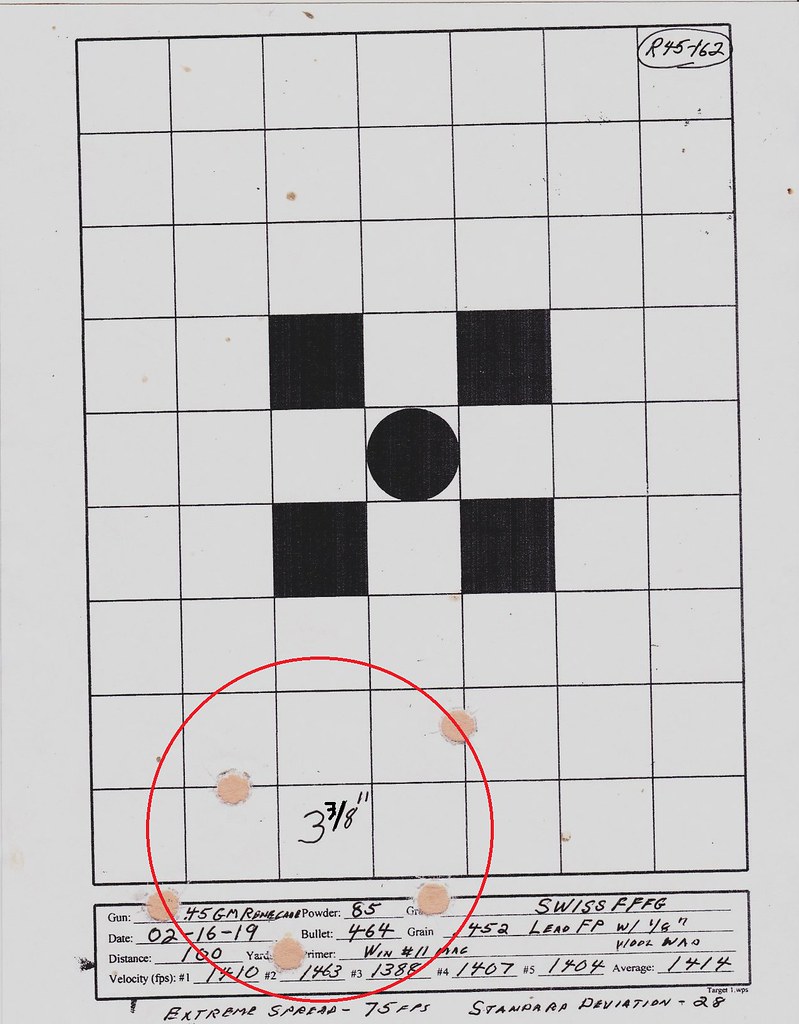
Here are the cleaning patches that were used to wipe the bore between the fourth and fifth shot with each powder.
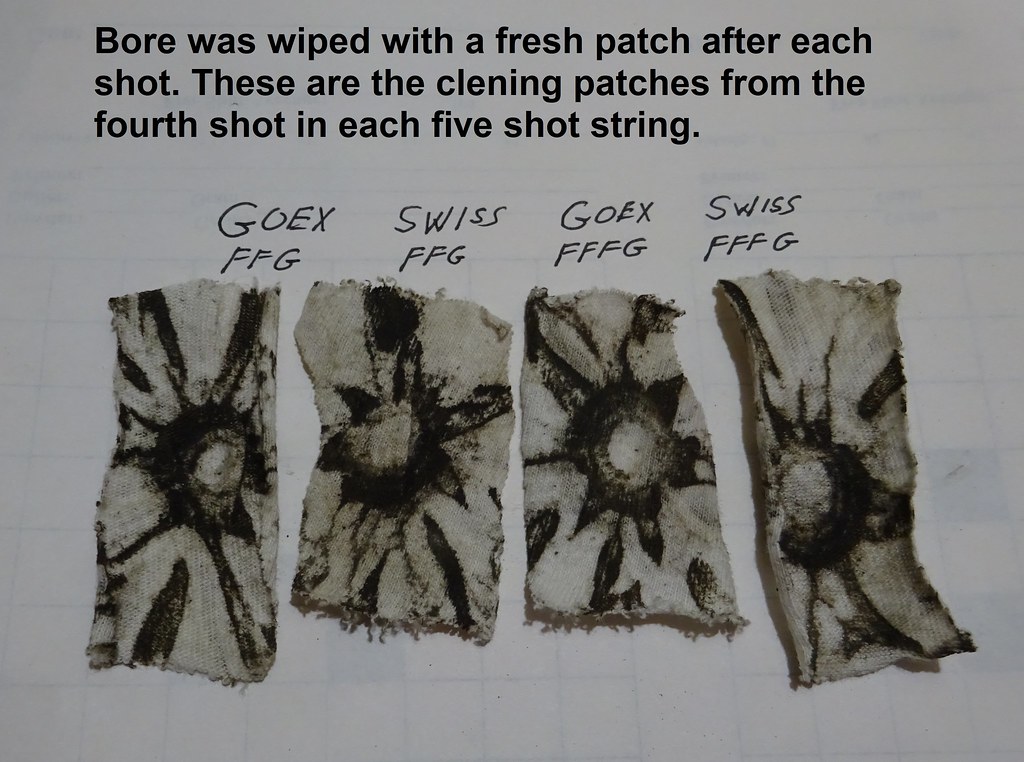
And here’s a summary of the results.
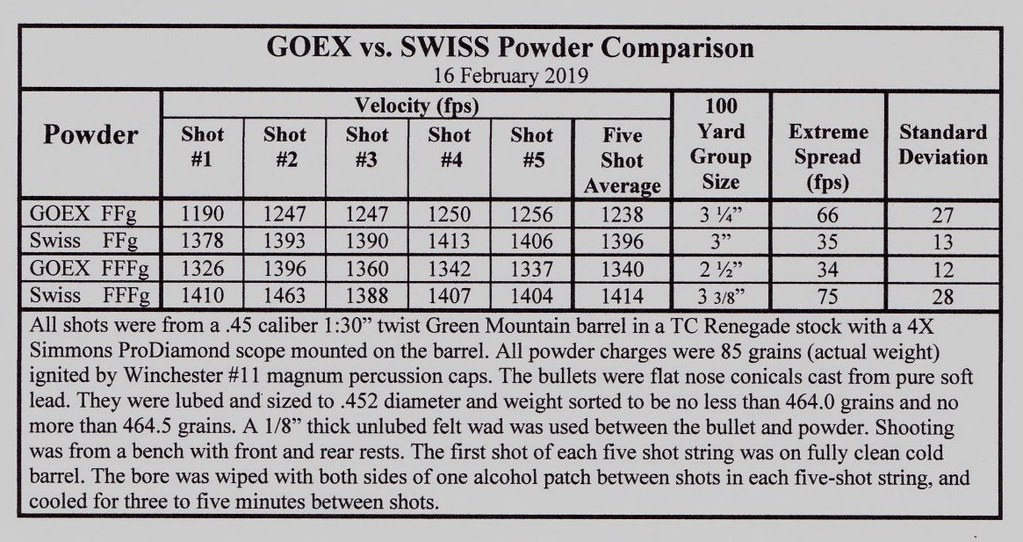
You may draw your own conclusions. It’s pretty clear that Swiss produces significantly higher velocities. I didn’t find a noticeable difference with respect to the degree of fouling produced by the two powders. However, that may be because I was wiping the bore between each shot. Results may be different with a long shot string without wiping. I’ll never know because I always wipe between shots.
With respect to accuracy potential, I found no significant difference between the two powders – at least not within my shooting ability or with this particular bullet and load. One day I’ll try a similar side-by-side comparison with patched balls in my .54 Great Plains flintlock.
I’ll likely be a GOEX guy forever. I like the stuff and I like supporting an American company.
So after many years of resisting the lure of Swiss I decided to get some and see for myself. This is a report of my side-by-side comparison of Swiss and GOEX in the 2F and 3F granulations of each.
For this exercise I chose to use my TC Renegade with a .45 caliber 1:30” twist Green Mountain barrel and shoot full bore conicals. I chose this gun and bullet for three reasons; the gun wears a Simmons 4X ProDiamond shotgun scope to keep aiming errors to a minimum, it’s already zeroed in for the load I planned to shoot, and I’ve shot the gun and bullet enough to know what kind of accuracy can be expected.
I installed a new AMPCO nipple at the beginning the shooting session and followed the following procedures for the test:
1. Four targets were shot at 100 yards, with five shots on each target and a different powder used for each target. All shots were over a chronograph 10 feet from the muzzle.
2. The first shot on each target was from a cold clean barrel with a three to five minute cooling period between each of the following four shots.
3. The bore was wiped between each shot with both sides of a fresh patch lightly moistened with 91% Isopropyl alcohol - one stroke down and up with each side. The bore was fully cleaned between targets.
4. For the first shot on each target, the bullet was seated until it just touched the powder. Then a stop collar on the loading rod was locked in place 1/8” above the muzzle and the load compressed that one-eighth inch. The stop collar remained locked in that position for the following four shots to assure the consistent load compression. The stop collar was reset in this manner for each target.
5. Pre-weighed powder charges of 85 grains actual weight were used.
6. The bullets were flat nose conicals cast from pure soft lead then sized and lubed to .452 diameter. They were weight sorted to assure that all were between 464.0 and 464.5 grains, and inspected to assure all had undamaged bases with sharp corners.
7. A 1/2” diameter 1/8” thick unlubed wool wad was used under the base of the bullets.
8. Winchester #11 magnum percussion caps from the same tin were used.
9. Shots were from a bench using a Caldwell shooting rest under the foreend and a rabbit ear bag under the butt stock.
Here are the charges ready to be shot.

Here’s the shooting bench and range.


Here are the four targets.




Here are the cleaning patches that were used to wipe the bore between the fourth and fifth shot with each powder.

And here’s a summary of the results.

You may draw your own conclusions. It’s pretty clear that Swiss produces significantly higher velocities. I didn’t find a noticeable difference with respect to the degree of fouling produced by the two powders. However, that may be because I was wiping the bore between each shot. Results may be different with a long shot string without wiping. I’ll never know because I always wipe between shots.
With respect to accuracy potential, I found no significant difference between the two powders – at least not within my shooting ability or with this particular bullet and load. One day I’ll try a similar side-by-side comparison with patched balls in my .54 Great Plains flintlock.
I’ll likely be a GOEX guy forever. I like the stuff and I like supporting an American company.
Last edited:






